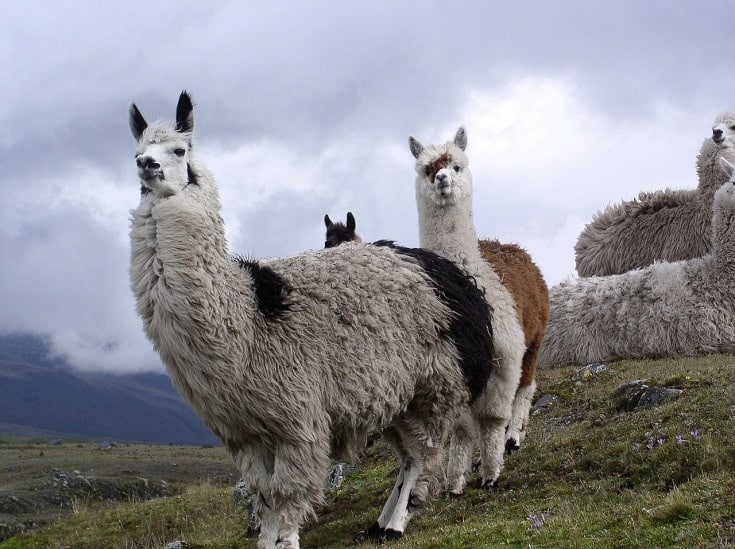We’ve all heard of Llamas and Alpacas, but chances are that you’ve never heard of the Vicuña or the Guanaco. But they are all a part of the camel family. Many of us actually have a difficult time figuring out the difference between Llamas and Alpacas, but there are four different types of Llamas.
We will discuss these four different Llama breeds and look at the differences are between Alpacas and Llamas, as well as the Vicuña and Guanaco.

What Is a Llama?
Llamas are considered domesticated livestock that belongs to the Camelidae, or camel family. Additionally, Llamas, Alpacas, Vicuñas, and Guanacos are all known as lamoids, and while they are related to camels, none of them have that distinctive camel’s hump.
Llamas inhabit Peru, Bolivia, Ecuador, Colombia, Argentina, and Chile but are used around the world. Today, Llamas don’t exist in the wild.
Llamas have been used primarily as pack animals, but they are also used for their wool and their hides and as food and fat for candles.
Llamas are the largest of the lamoids that travel in herds and graze on grass and plants. They stand at about 47 inches at the shoulder and weigh up to 400 pounds.
They are easygoing but are famous for their spitting when they’re not happy. They are typically white but can also be all brown or black or white with brown or black markings.

The 4 Kinds of Llamas
There are four different kinds of llamas. We go over how they are unique from each other.
1. Classic Llamas
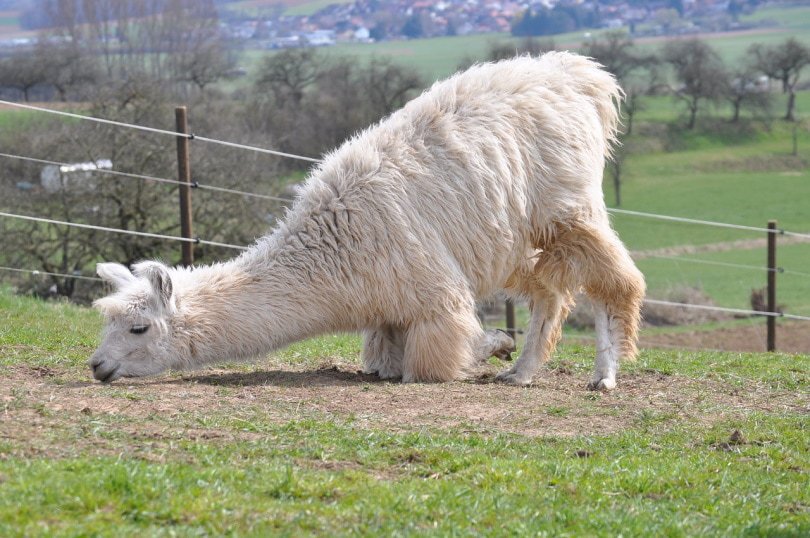
The Classic Llama is essentially a coat type. They are also called the Ccara Sullo and are the tallest and largest of the llamas. Their thick double coats help them endure cold climates.
They are double-coated with many guard hairs covering their entire bodies. Their undercoat can be easily combed out when they go through their seasonal shed. When the undercoat is combed out, their coats can look much thinner.
Another way that you can tell that you’re looking at a Classic Llama is by the ears. They are rounder compared to the usual “banana-shaped” ears that you see on other llamas.
2. Wooly Llamas
The Wooly Llama is the smallest of the llamas and is covered in the heaviest wool. However, they don’t have an undercoat, so their fleece is just in a single layer. The fleece tends to be thickest on their heads, necks, and ears and is quite thick and has a twisted texture.
3. Medium Llamas
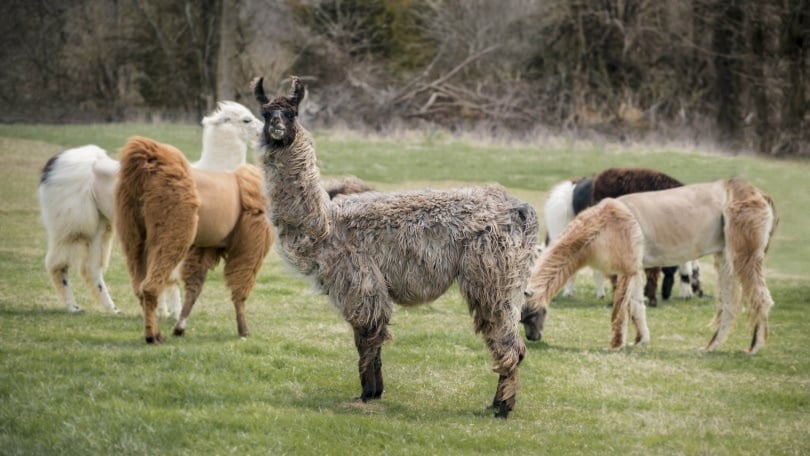
The Medium Llama is a crossbreed from the Wooly and the Classic Llamas, so they tend to be medium in size, hence the name. They have long fleece all over their bodies, with the exception of their legs, heads, and ears, which have shorter wool. The guard hairs are long and have a rough texture.
The best way to tell the difference between a Medium and Wooly Llama is that the Medium has an undercoat while the Wooly does not.
4. Suri Llamas
Though not to be confused with the Suri Alpaca, the Suri Llama has similar and unique fleece. The Suri fleece lies as if draped over the body. As the wool grows, it separates itself into cords.
Suri Llamas have a more challenging time staying warm because of the way that their fibers lie on their bodies, and the texture of their guard hairs is quite fine. They also only have a single coat of fiber. This breed is one of the rarest of all of the Camelid family.

What About the Other Lamoids?
Since there’s a great deal of confusion about Llamas compared to Alpacas and because there are two other species that are members of their family, we’ll look at these three other lamoids.
The Vicuña
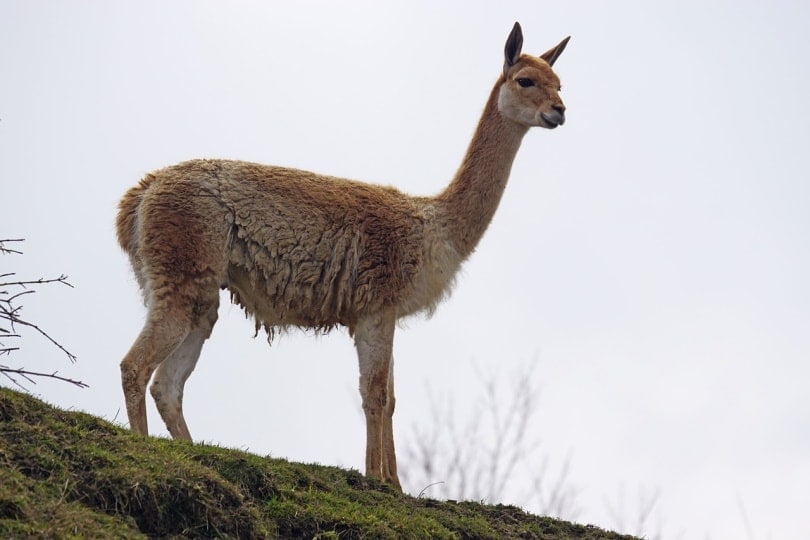
The Vicuña is the smallest compared to the rest of the lamoids. It is related to the Guanaco and is primarily found in Peru but also inhabits Argentina, Columbia, Bolivia, Chile, and Ecuador.
The Vicuña is the wild ancestor of the Alpaca and has a soft, lustrous coat that can be white to a light cinnamon. However, they are primarily wild, and it’s almost impossible to domesticate them because of their mating habits.
They stand at 36 inches at the shoulder and weigh around 110 pounds.
The Guanaco

Guanacos are the ancestors of the Llama that are still found in the wild. They are also found scattered throughout South America, from the Andes to Bolivia.
They can be as tall as 50 inches at the shoulder and weigh up to 309 pounds. They are used as pack animals and for their skin, meat, and wool.
The Guanaco has a thick wooly coat that can be a light tan to a yellowish-brown and a deeper rusty red. Their backends, bellies, and the back of their legs are usually white, and their ears, heads, and back of the necks are gray.
The Alpaca
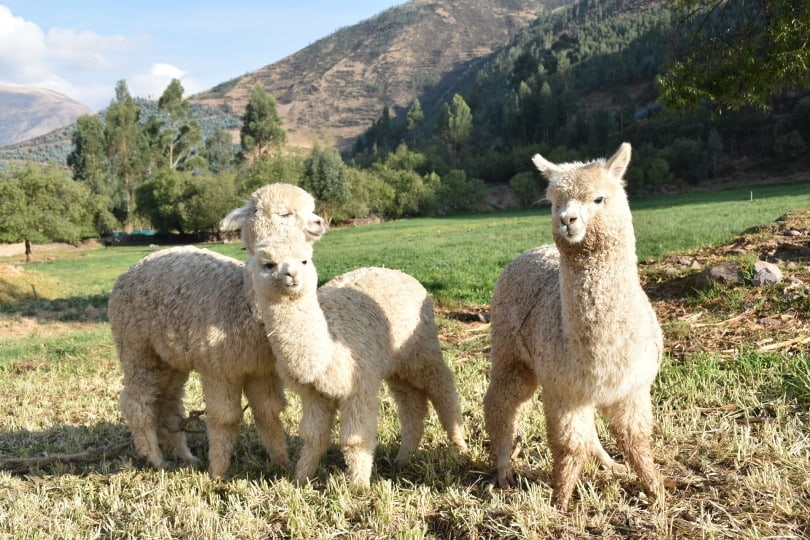
Alpacas are the domesticated lamoids that are descended from the Vicuña. They inhabit southern Columbia and Ecuador and northern Chile and Argentina. They are the only lamoids that are adapted to marshy ground but are also much more limited in their range.
They stand about 35 inches at the shoulder and weigh up to 143 pounds. Their shaggy coats come in a range of colors: brown, black, gray, tan, light yellow, and occasionally white. They are the most important lamoid breed for fleece production.
Genetic studies confirmed that Alpacas are the domesticated descendants of the Vicuña from about 6,000 to 7,000 years ago.

How to Tell the Difference Between a Llama and Alpaca

Size is usually the most obvious difference. Alpacas stand at 35 inches high, whereas llamas can be 47 inches. That’s a difference of a foot! Llamas are also about 100 pounds heavier.
Another way to tell the difference is by looking at their faces. Most Llamas have long noses with their famous banana-shaped ears. In contrast, Alpacas have short, small faces and small, spear-shaped ears.
Llama hair tends to be coarser and not as soft as Alpaca hair, and Alpacas come in a greater variety of colors. Alpacas also tend to have more hair on their heads and faces than Llamas.
There’s even a difference in temperament. Llamas are a little calmer and more independent than Alpacas. Alpacas can be a little more timid and skittish and definitely prefer to be in a herd.

Conclusion
We hope that after reading this article, you’ll be able to tell at a glance if you’re in the presence of a Llama or an Alpaca, or even if you’re looking at a Classic, Wooly, Suri, or Medium Llama. The fact that you can crossbreed the Llama with any of the other lamoids is what gives us such a variety in Llamas, both in size and their coats.
They are calm and gentle creatures that have gotten an undeserved reputation for being bad-tempered and enjoy spitting every chance that they get. In fact, they only spit when they are stressed out or upset. So, be kind to any Llama that you meet. You’ll avoid the spitting and get to know this beautiful, gentle animal.
- Next on your reading list: Llama vs Camel: What’s the Difference?
Featured Image Credit: ZEBULON72, Pixabay
